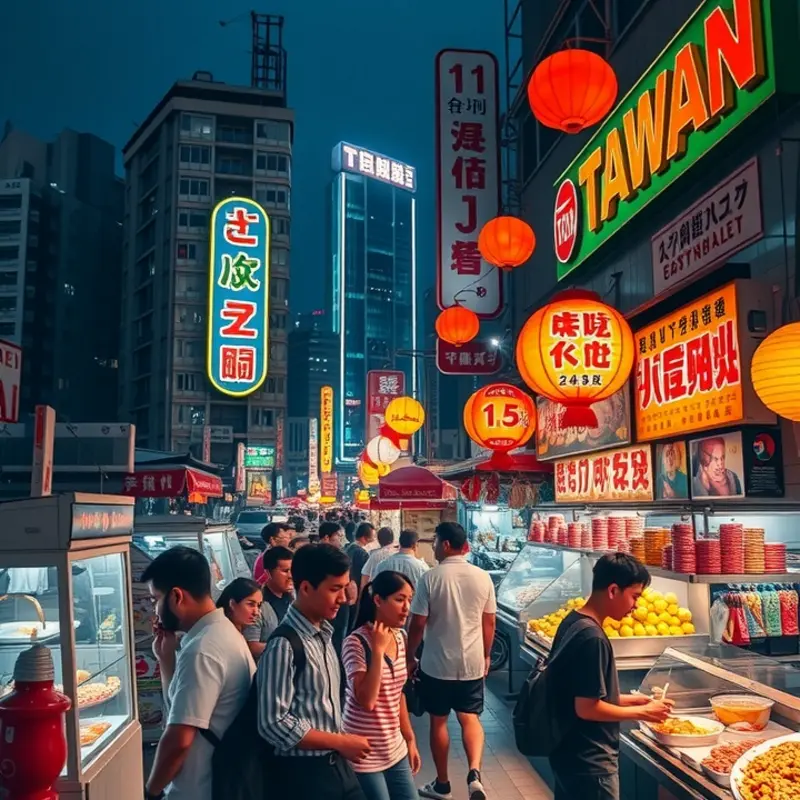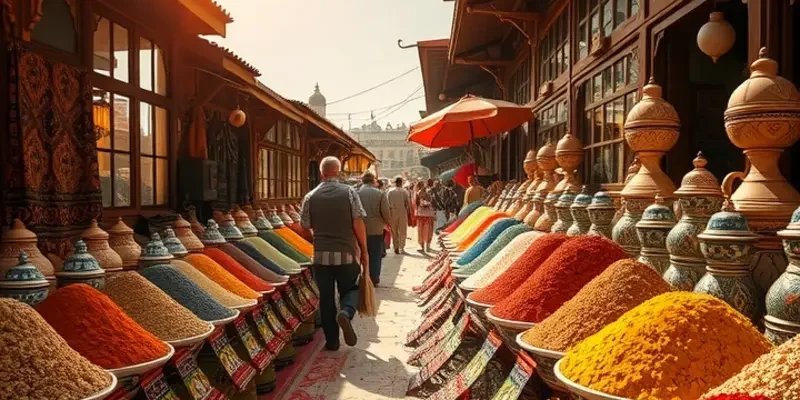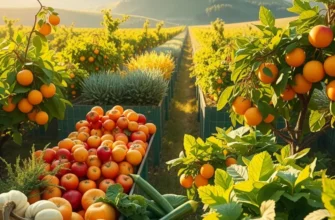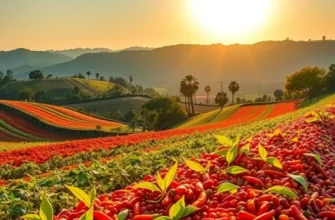Step into the vibrant world of international markets, where culinary traditions come alive through a mosaic of flavors. Each stall tells a story, showcasing regional produce, spices, and delicacies that define diverse cultures. Discovering these food treasures invites food enthusiasts to expand their palate and deepen their understanding of global gastronomy. This exploration offers a flavorful passport to traditions and specialties from different corners of the world.
The Spice Markets of Marrakech: A Symphony of Aromas

Marrakech, a vibrant jewel in Morocco’s crown, is home to a symphony of sensory delights, none more captivating than its spice markets. Tucked within the labyrinthine alleys of the medina, these markets dazzle with their riot of colors and intoxicating scents. Each spice mound, from the brightest saffron to the earthy cumin, whispers tales of Moroccan culinary artistry.
Among the most coveted treasures in these markets is saffron, known as ‘red gold.’ Its delicate threads infuse dishes with a luxurious aroma and a distinctive hue. Combined with other spices, saffron plays a leading role in Moroccan tagines. These slow-cooked stews blend flavors harmoniously, creating dishes that are rich and layered, yet remarkably balanced.
Cumin, another staple, is ubiquitous in Moroccan cooking. Its pungent aroma permeates street food and home kitchens alike, grounding dishes like couscous with its warm depth. Couscous itself is a canvas, embellished with an array of ingredients—from sweet raisins to tender lamb, each bite a testament to its versatile nature.
Cinnamon, both sweet and savory, offers a surprising twist in the Moroccan spice palette. Sprinkled over pastries or stirred into meat dishes, it adds a warm sweetness that complements the intricate flavors beneath. It’s essential in pastilla, a pie encased in flaky pastry that accentuates the cinnamon’s dual character.
Moroccan spice blends, like ras el hanout, are crafted from a secretive mix of select spices. Vendors guard their recipes, passed down through generations, each adapted to the market’s specific flair. These blends are transformative in Moroccan cuisine, lending a profound complexity to even the simplest ingredients.
Spices do more than flavor Moroccan dishes; they embody cultural significance, intertwined with familial and communal traditions. From modest kitchens to grand celebrations, their presence is a constant reminder of shared heritage and hospitality.
Street snacks, like maakouda—fried potato cakes often seasoned with turmeric and cumin—show how spices elevate everyday eats, making quick meals both aromatic and deeply satisfying. Meanwhile, family feasts highlight the grandeur and variety of the Moroccan spice repertoire, each dish a cherished heirloom.
Visiting these markets is not just a culinary excursion but a cultural immersion. Each spice stall tells a story, connects visitors with centuries-old traditions, and offers a taste of Morocco’s rich history. The vibrant market atmosphere—sellers bartering, scents mingling—infuses the experience with a dynamic energy that is both exhilarating and humbling.
Intrigued by how spices shape global cuisines? Consider exploring more about how trade has historically influenced culinary traditions, as discussed here.
In Marrakech, the spice markets are a feast for the senses, transforming each stroll through the narrow alleys into a journey back in time, rich with connections to the city’s past and tastes of its future.
Street Food Heaven: Exploring Night Markets in Taiwan

As dusk falls in Taiwan, the night markets awaken, transforming city streets into bustling hubs of culinary discovery. Each market hums with vibrant energy, drawing locals and travelers alike to revel in the remarkable variety of xiao chi—or, ‘small eats’—that define these culinary wonderlands. The air crackles with the sizzle of oil, and every corner reveals a tempting delight, ready to captivate your taste buds.
No visit to a Taiwanese night market is complete without tasting the legendary stinky tofu. This polarizing dish, beloved by locals, is fermented to give it a potent aroma that is unmistakable. The tofu is deep-fried until golden, its crispy exterior yielding to a soft interior. A garnish of pickled cabbage and a dash of chili sauce serves as the perfect accompaniment, balancing the pungent tofu with fresh, tangy notes.
For those seeking something sweet, taro balls serve as an iconic choice. Made from mashed taro mixed with sweet potato flour, these chewy spheres are simmered to soft perfection. Often served in sweet soups or iced desserts, they dance on the palate, providing a comforting warmth or a refreshing chill, depending on the season.
Live cooking is the essence of these markets. Vendors skillfully prepare each item right in front of your eyes, ensuring freshness and encouraging interaction. Grilled meats of all kinds, from skewered chicken hearts to sizzling pork belly, send tendrils of smoke into the night air. Each bite is an adventure into Taiwan’s rich culinary history, with techniques and flavors passed down through generations.
Bubble tea stands, with their colorful, translucent offerings, attract crowds seeking a sweet beverage to complement their savory snacks. The gentle clink of ice against plastic cups signifies the younger generation’s favorite drink—an irresistible blend of tea, milk, sugar, and tapioca pearls that is essentially a dessert unto itself.
Night markets also play a vital social role, bringing communities together. Families, friends, and even strangers gather to share meals, stories, and laughter. The communal seating areas, often comprised of simple plastic stools and tables, foster a sense of togetherness that extends beyond mere dining. These places are reflections of Taiwan’s vibrant culture, offering a taste of the island’s festive spirit to anyone fortunate enough to wander through their bustling thoroughfares.
For those interested in sustainable living, the night market experience offers valuable lessons in low-waste cooking and preparation techniques. The efficient use of local ingredients and the opportunity to purchase only what is needed contribute to a more sustainable food culture. You might find inspiration in these practices that align well with low-waste cooking prep, creating a way to enjoy food while being mindful of our resources.
These markets, with their unforgettable flavors and aromas, embody the heart and soul of Taiwan. Whether you’re a seasoned culinary adventurer or a curious traveler, the night markets promise an unforgettable journey through the island’s rich flavors and traditions.
Final words
Exploring food from world markets reveals the deep-rooted connections between culture, tradition, and flavor. As you journey through the spice markets of Marrakech or indulge in street food from Taiwan’s vibrant night scene, you engage with histories and narratives that enrich your culinary experiences. Each bite serves as a testament to the creativity and resourcefulness of communities around the globe, reflecting distinct tastes that define cultural identity. Embrace these culinary worlds and let curiosity guide your next flavorful adventure.








